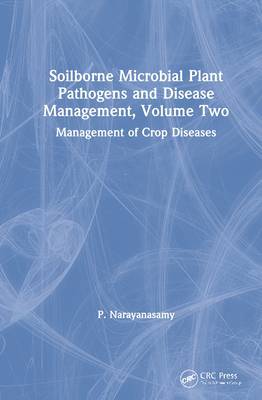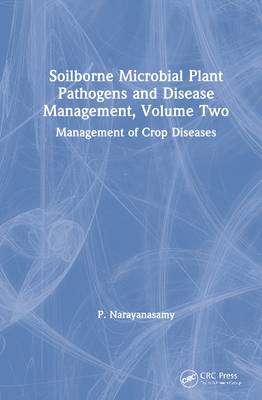
- Retrait gratuit dans votre magasin Club
- 7.000.000 titres dans notre catalogue
- Payer en toute sécurité
- Toujours un magasin près de chez vous
- Retrait gratuit dans votre magasin Club
- 7.000.000 titres dans notre catalogue
- Payer en toute sécurité
- Toujours un magasin près de chez vous
Soilborne Microbial Plant Pathogens and Disease Management, Volume Two
Management of Crop Diseases
P NarayanasamyDescription
Crop disease management strategies revolve around the principles of exclusion, eradication and immunization. Cultural practices are aimed at preventing or reducing the accumulation of pathogen population (inoculum). Development of cultivars with genetic resistance by transgressing resistance gene(s) through traditional breeding procedures or biotechnological techniques is the most effective and acceptable strategy, as it is environment-friendly and does not need any additional cost to the grower. Assessment of different grades of resistance of cultivars or genotypes to soilborne microbial pathogens has been possible by quantifying pathogen populations or their DNA contents in the test plants by applying biological and molecular methods.
This second volume of a two-volume set focuses on the soilborne microbial plant pathogens and the diseases caused by them. The book provides information on ecology and epidemiology of soilborne microbial plant pathogens and various strategies applicable for effective management of diseases. Chapters cover exclusion and prevention strategies; improvement of host plant resistance; biological management; application of chemicals; and integration of these disease management strategies.
Features
- Discusses various aspects of soilborne microbial plant pathogens to develop effective methods of managing diseases.
- Presents information on epidemiology and ecology of soilborne microbial plant pathogens.
- Facilitates the application of management strategies alone or in combination with others for effective suppression of disease development.
- Features information on application of biotic and abiotic biological control agents (BCAs) to suppress pathogen development either by directly acting on the pathogen(s) or indirectly by enhancing host resistance to the pathogens.
- Employs biotic and abiotic biocontrol agents either to replace or reduce the use of chemicals is an achievable approach for managing the soilborne microbial pathogens.
Spécifications
Parties prenantes
- Auteur(s) :
- Editeur:
Contenu
- Nombre de pages :
- 300
- Langue:
- Anglais
Caractéristiques
- EAN:
- 9780367178765
- Date de parution :
- 25-10-19
- Format:
- Livre relié
- Format numérique:
- Genaaid
- Dimensions :
- 221 mm x 282 mm
- Poids :
- 793 g







